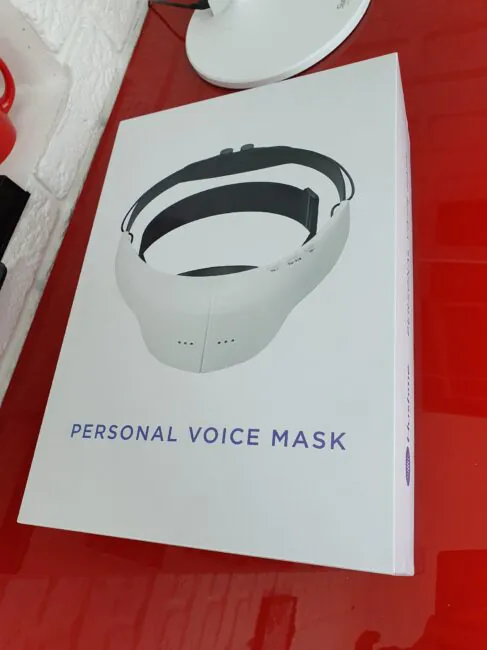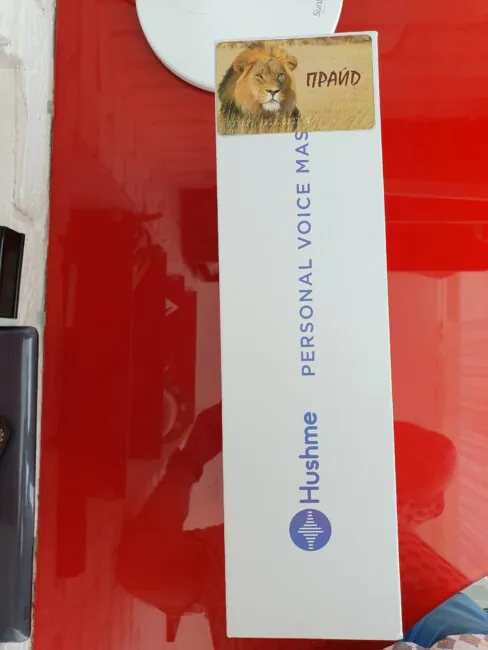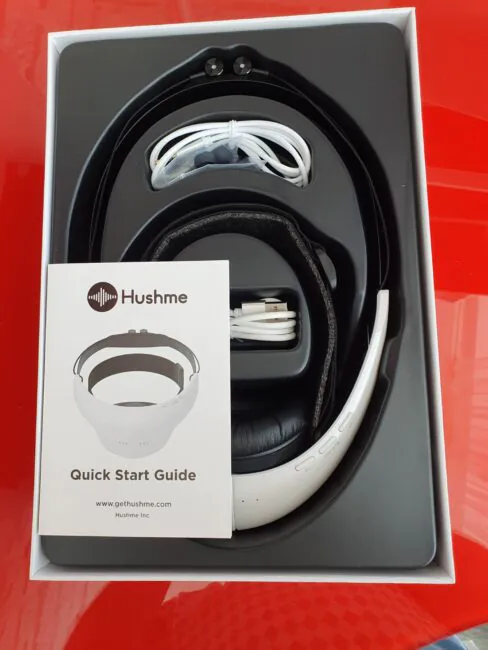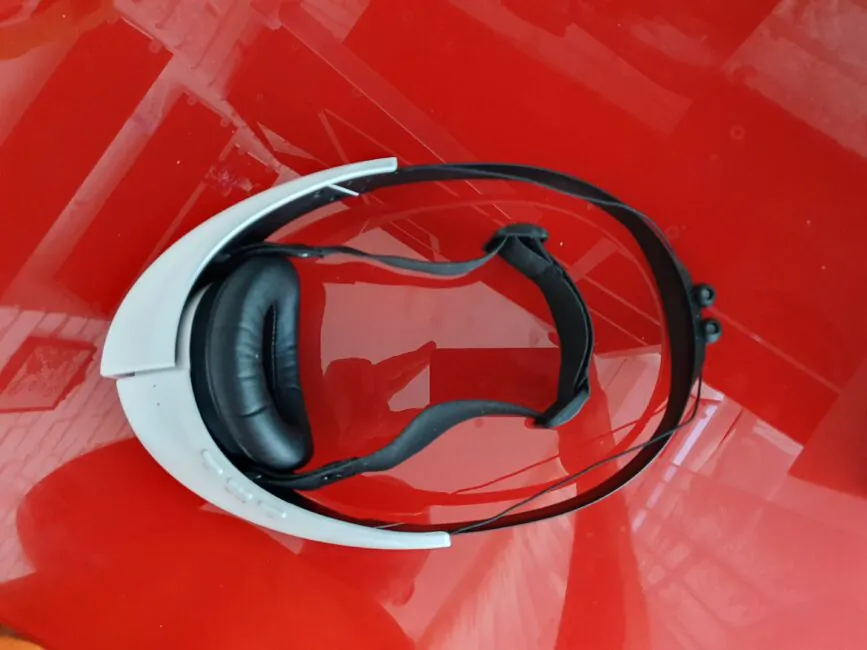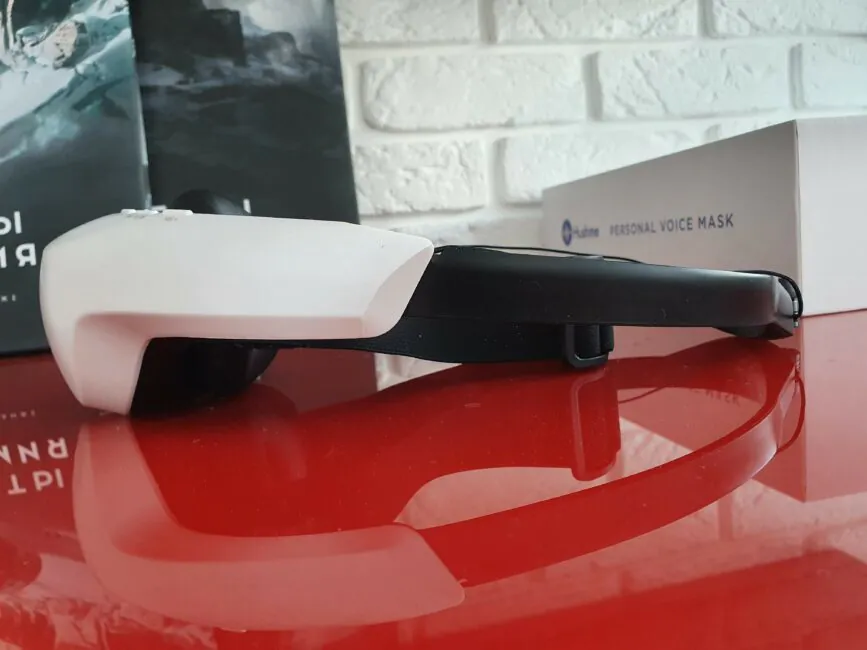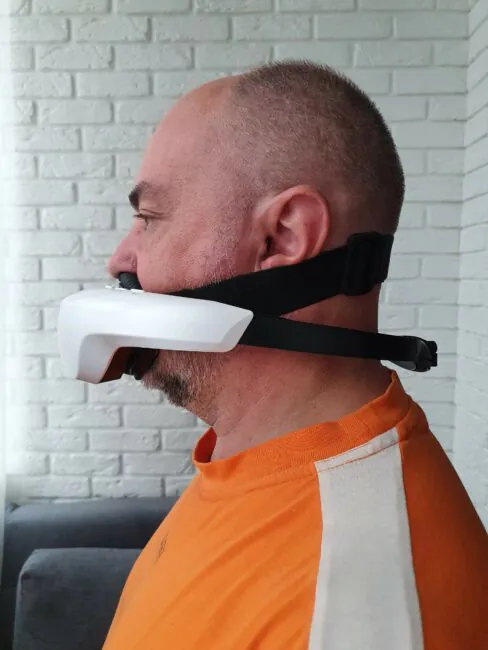© ROOT-NATION.com - Use of content is permitted with a backlink.
Nowadays really unusual, unique and therefore interesting products do not often fall into my hands. I have been following the progress of the Hushme project almost from the moment of its foundation, and the concept of the device immediately captured my imagination. And now, finally, I got it in my hands, but is this what I was hoping for?

On the first day of testing, I posted this photo to my Facebook feed with an invitation to readers to guess what it was. These are the answers I received:
- device for cleaning teeth
- sound moderator (that is, a device that censors obscene language)
- diet aids
- inhaler
- beard trimmer
As you can see, the device is very unusual and intriguing. But what is it?
History, use, positioning
Hushme has an idea, upon hearing which every product manager will slap himself on the forehead and ask: “Why didn’t I think of this?!”. Modern people communicate a lot by phone, IP-communication or videoconferencing, in conditions where the presence of other people cannot be avoided – in open-space offices, in cafes, public transport or even at home. This leads to a lot of inconvenience for the speakers themselves – ranging from psychological discomfort from talking in public to the risks of information leaks or annoyance of others. Therefore, the idea of inventing a device that would muffle the voice of a speaking person sounds quite logical. Tehre is potentially a huge market here, from office workers, freelancers and remote workers, as well as gamers around the world.
It seemed obvious that to achieve this goal you can use the active noise control technologies that are now gaining popularity in headphones. The essence of the technology, in general, is that in order to suppress the sound wave that is picked up by the microphone, the device calculates and emits the same wave, but with the opposite phase, by the built-in speaker. When two waves are superimposed, they cancel each other out, and in the ideal case, the listener does not hear either of them. However, in reality, everything is much more complicated, and the development of the first Hushme device took several years. It went on sale only in the spring of 2021.
The device is sold only in the USA and Japan for $229. Quite a lot. However, the device has no rivals yet, and those who really need it have nowhere to go.
Also interesting:
- Realme 8 vs Redmi Note 10S: Budget smartphones head-to-head
- Noble Falcon 2 earphones review: Riding the waves of audiophile sound
Unpacking and trying on Hushme
The device comes in a rather large box. Inside there is a plastic cradle on which the Hushme itself is located, USB and audio (3.5 mm mini-jack to mini-jack) cables, and a brochure with several pages of instructions.
The device itself, although quite large in size, weighs little. The main part is closed on the outside with white pearlescent plastic covers, black on the inside. To the latter is attached a head arch, also plastic, and an elastic band that fixes the device on the face.
There is no metal in the structure, however, being light is far more important in this case than pleasant tactile sensations.
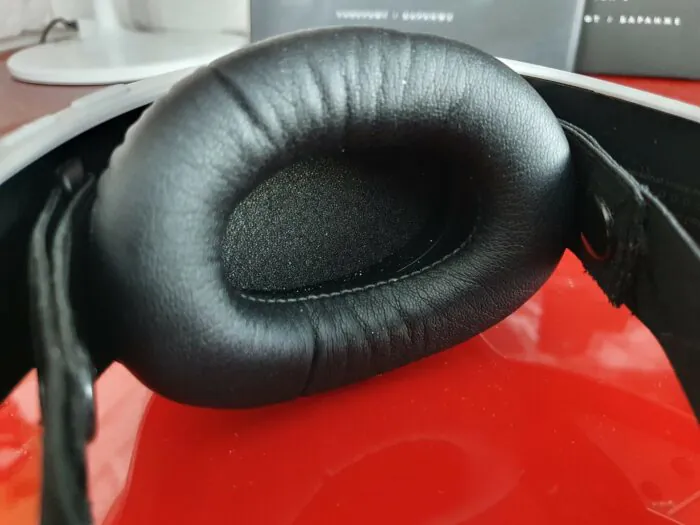
The basis of the Hushme is a closed sound chamber around the mouth, which is provided by an ear cushion (similar to one closed earphone, only more curved), covered with thin and exceptionally soft artificial leather. Inside the camera is lined with foam rubber, under which there is a microphone system.
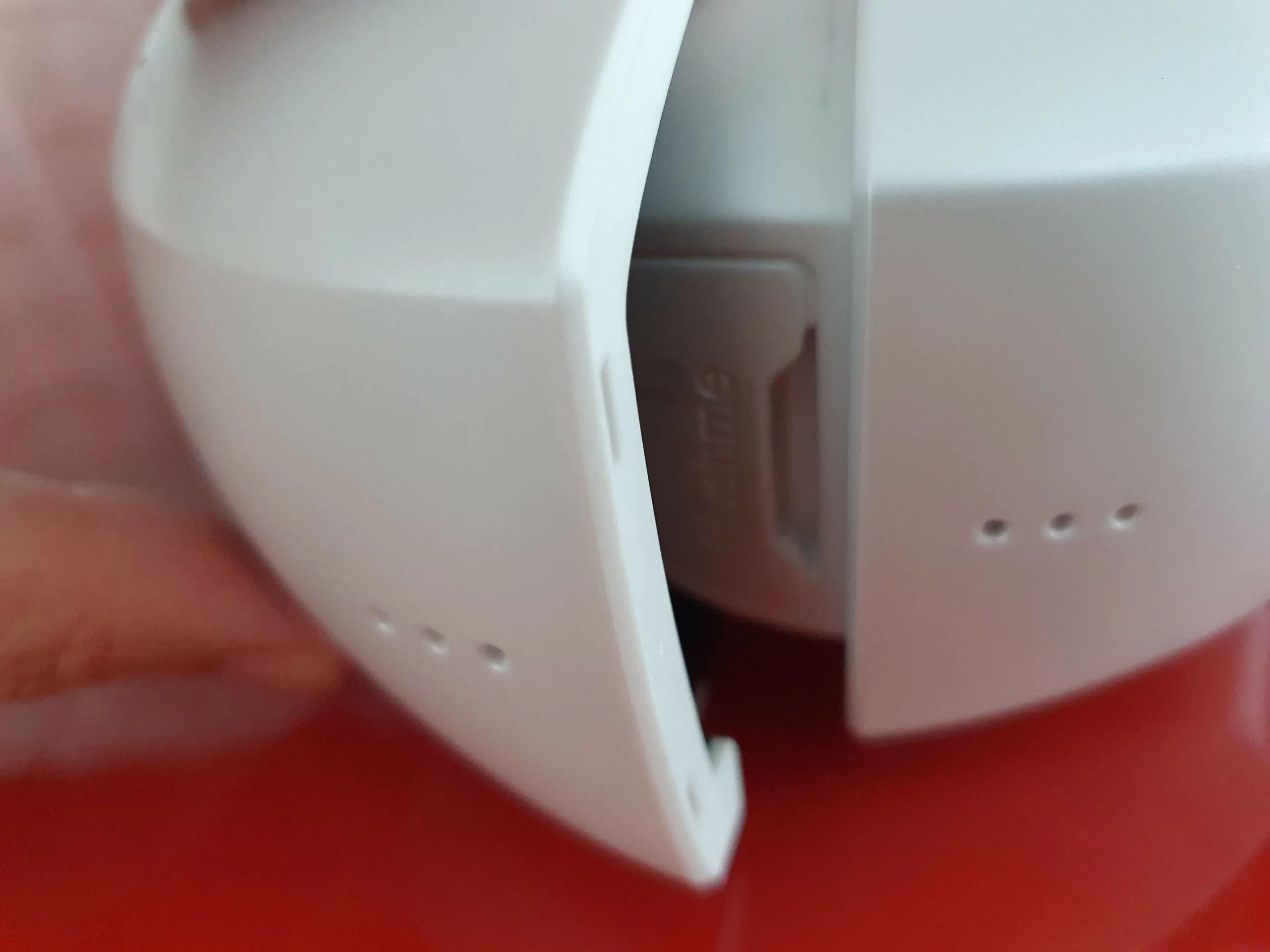
How to put on Hushme correctly is described in detail in the instructions, which should be studied before use. The device can be put on so that the elastic band passes through the back of the head, and not through the crown. Its length can be adjusted according to the size of the head. Next, press the ear cushion against the upper lip so that it covers the mouth, and lock the mask.
The headband hangs in the air, and quite far behind the back of the head. Obviously, its role is to balance the entire device with its mass, turning the mask up and not letting it slide on the chin under its own weight. In the same place, at the top of the arc, there are headphone jacks with built-in magnets. They hold the earbuds securely enough, but the attachment point itself is far away, and in order to get the headphones, you have to throw your hands rather uncomfortably. It also inappropriately rests against the headrest of the chair if you lean back.

Each headphone cable is thin, covered with a fine sheath like a thin artificial fabric, which is unusual since most of these cables are covered with smooth polymer insulation. At first glance, such insulation seems less reliable, but this is not the case, since the braid is quite strong, and the cable itself remains thin and flexible.
Hushme is held on the face due to the tension of the strap, so when worn, the device presses quite noticeably on the upper lip and chin. For those who wear a mustache or beard, this can be frustrating. Therefore, the developers do not expect that the mask will be constantly worn – it is quite possible (and necessary) to simply wear it around your neck in the open state all the time until you want to talk in confidence.

Read also:
- EKSA E5: How To Buy The Best Budget ANC Headphones For Only $ 38!
- Huawei FreeBuds 4 review: Improved TWS earbuds with familiar design
In this case, the mask turns into a kind of rather bulky pectoral, which does not cause too much inconvenience, especially if you get used to it. However, for those who have a short neck, it will interfere with tilting their head. Also, the collar of a regular shirt will cling to it. In this mode, you can simply carry the device, listen to music through the built-in headphones, or even speak – for the latter case, there is a special mode of operation of the microphones.
How does it work
In terms of its set of custom features, Hushme is a regular, classic Bluetooth headset. It connects to a computer, tablet, or smartphone using regular Bluetooth pairing. Sound is played through a pair of regular earphones. I see no reason to meticulously evaluate the quality of their sound, since the whole device is not intended for enjoying the audiophile sound. As a first approximation, it sounds like a regular Bluetooth headset. Cleanly, without tangible artifacts, but that’s about it. Suitable for listening to background music while working.
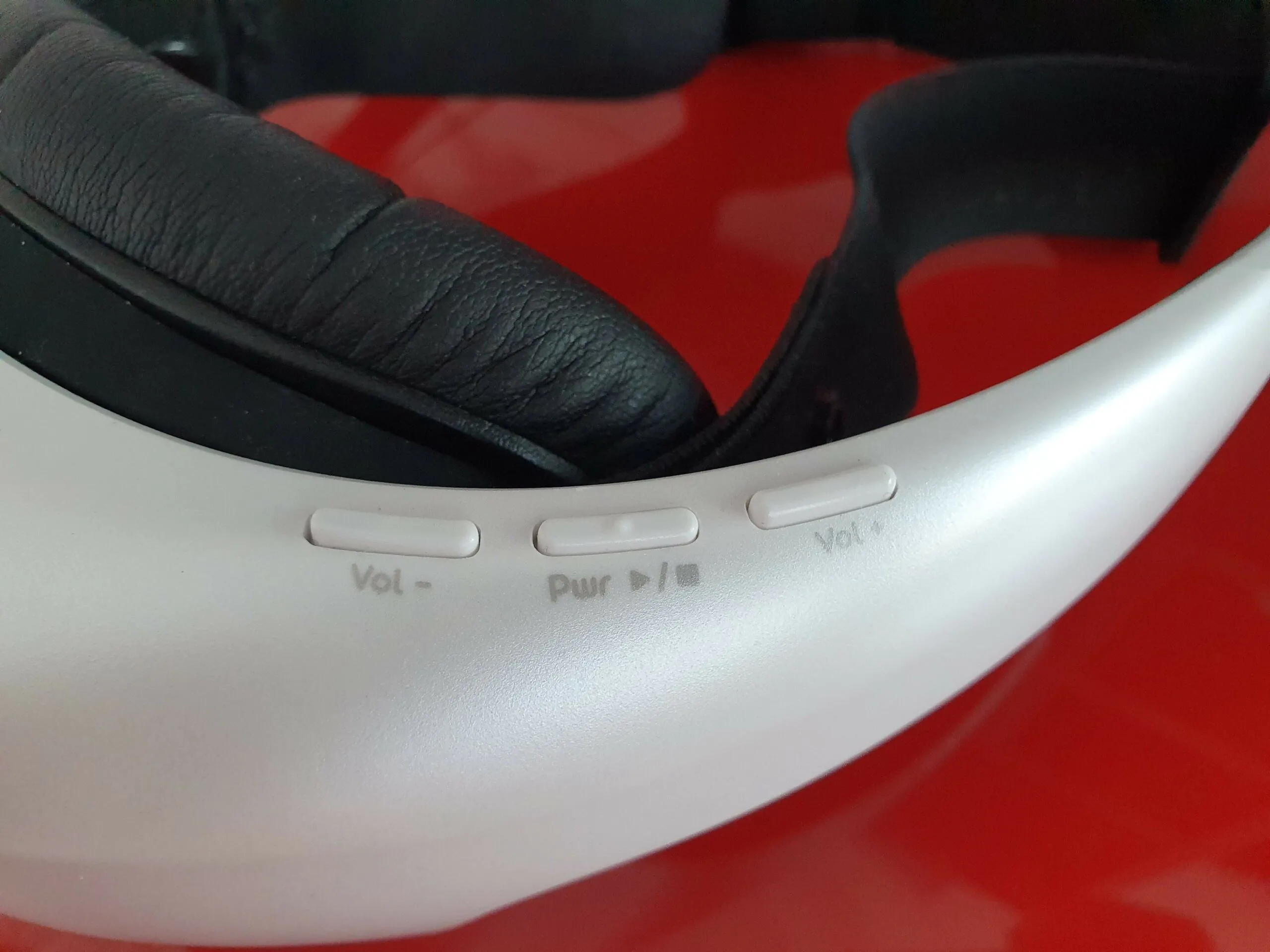
You can control the playback volume using the Vol + and Vol – keys. You can pause and resume music playback, and answer and end calls – all with one button. All three are located on the upper side of the case in a place that, when the device is put on, is under the left eye, so you do not have to press blindly.
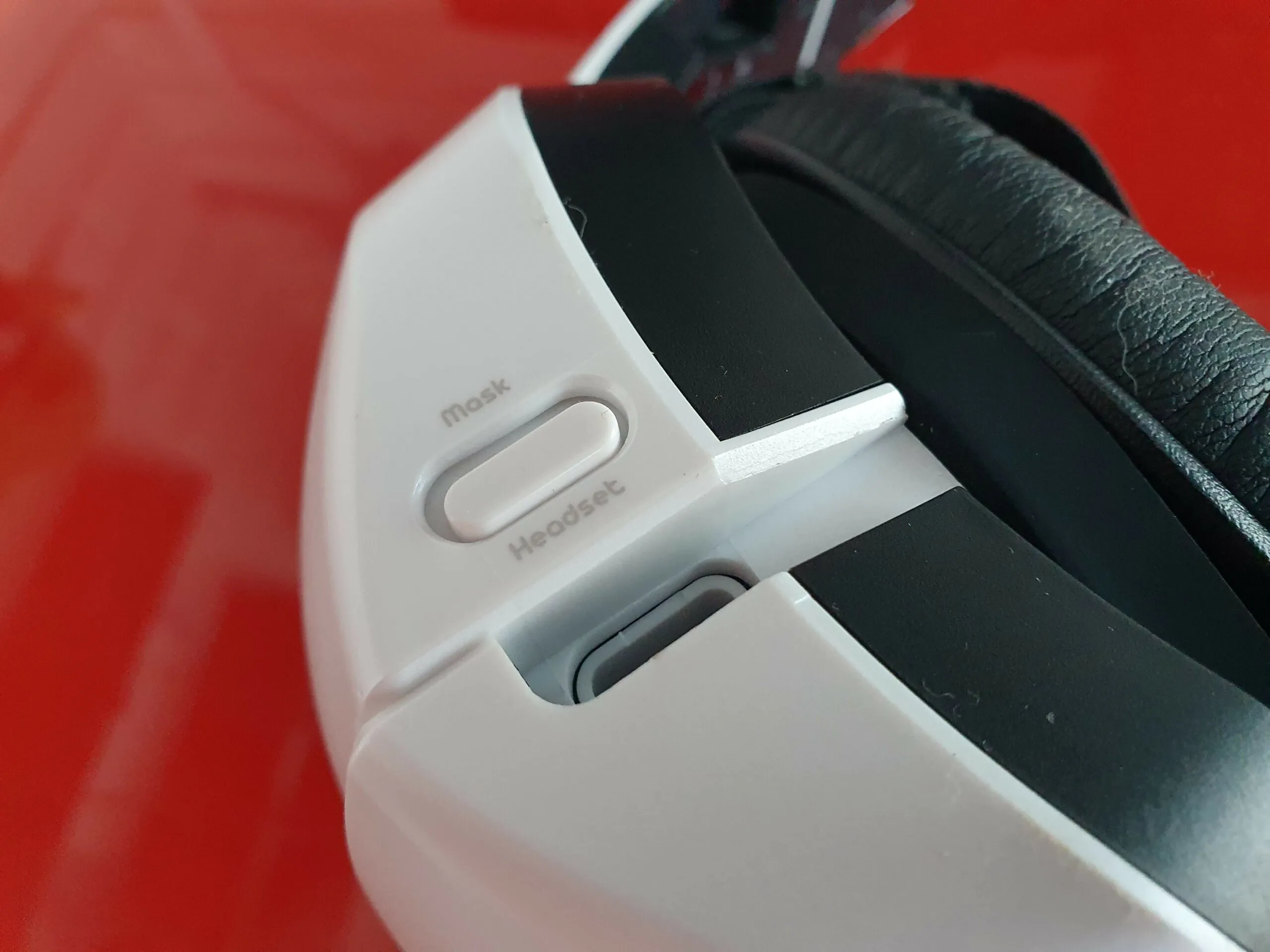
When you need to talk, you can choose to do it with the mask around your neck or with a mask on. Ideally, you should select the appropriate microphone mode for this. This is done with a switch on the underside of the case. Of all the ergonomics of Hushme, this moment is the weakest point. You constantly forget about switching. Developers should add a switch that would act on itself when the mask is closed. However, since the influence of the microphone mode on the sound quality is not too critical, you can live with this disadvantage.
What Hushme does
Let me remind you of my expectations from the device (based on the history of its development and, probably, on my own needs): when I sit in an open space and want to talk, say, on Skype, I put on Hushme, activate it, and the people around him hear my voice very quietly (if they hear at all), and the interlocutor, on the contrary, hears clearly and without extraneous sounds coming from everywhere.
The reality, as it turned out, differs quite strongly from these expectations.
Does Hushme muffle my voice for others?
Almost not.
Firstly, there is no active noise control system here. To reduce the user’s volume, the device relies only on the effect of a closed sound chamber, covered as much as possible from the inside with sound-absorbing materials. This, of course, works. To the possible extent. However, there is no significant decrease in loudness. To be objective, let’s do this test.
Here is my speech in an open environment, recorded on a smartphone microphone. According to the sound level meter program, its volume is 62.5 dB.
Here is what the smartphone shows through the Hushme microphone and Bluetooth (can be used to evaluate the quality of the Hushme microphone).
And here is what others hear when I put on and activate Hushme. The program measured 61.8 dB.
Secondly, the mask and its ear cushions distort the sound of the voice quite strongly, which is also noticeable in the recordings above. This is caused both by the presence of a closed sound chamber and by the fact that the mask presses quite hard on the lower jaw and lips.
As a result, according to my colleagues, Hushme does not mask my voice during a conversation, but rather draws attention to it. When, among ordinary office sounds, someone starts to speak, although not loudly, but nasally, like into a pillow, this does not go unnoticed. People involuntarily begin to listen, it distracts them, and sometimes even annoys them. Yes, speech is less clear, however, due to increased attention, the likelihood that colleagues will know the content of the conversation is higher.
I turned to engineers who have experience in sound processing with the question: is it possible to create an effective active sound cancellation system for such a task. They all answered that it was very difficult. You can actively suppress the sound at the receiving point, but not the transmitting point. This means that it is technically possible to receive a sound wave by a microphone, and then calculate the parameters of the second wave that will be emitted by the loudspeaker so that when they meet in the listener’s ear, they add up to zero. This is how noise control in headphones works. However, it is extremely difficult to calculate such a wave that, when superimposed on the first one, would give zero at any random point in space. It is extremely difficult even from the point of view of mathematics, not to mention technical implementation.
Does Hushme distort my voice for the interlocutor?
Unfortunately yes.
Considering that a closed sound chamber and pressure on the lower jaw should distort speech and make it less intelligible at the “other end”, this is what you would expect. And tests confirm this.
I made several “blind” calls to friends without warning them that I would speak through Hushme. Absolutely everyone started the conversation by asking what device I was calling from, complaining about the “pillow effect”, worse speech intelligibility, some said that it was too hard to hear for them and asked to call back.
Does Hushme muffle ambient sounds for theinterlocutor?
Yes, and effectively so.
To test this feature, I went down to the subway and made several calls from there. At first I called with an open mask, warned that I was in the subway and asked to evaluate the audibility. Then I put on the mask, called back again and asked to evaluate the difference. Without exception, all the interlocutors said that with Hushme the sound quality is much better, no extraneous noise is heard at all, even in the noisiest moments.
To prove this, I made comparative audio recordings on the built-in voice recorder of the smartphone, having previously made sure that the recording was carried out through a Bluetooth device, and not the built-in microphone.
Here is a recording inside a subway train on the underground section, without Hushme.
And with it.
Now let’s repeat the test on the platform of the underground station at the moment the train arrives (at this time the noise is the loudest) – first with an open mask.
And with the mask on.
You can judge the difference for yourself.
Hushme: who needs this?
As I hinted at the very beginning of the review, Hushme is not exactly what I was hoping for. And it doesn’t look like much. So who needs it?
For regular office conversations in an open space or a cafe? No. Your voice will be heard, unusual timbre will attract attention, and the quality of your sound will be significantly worse than the interlocutor expects.
For work at home? Also wrong. It is unlikely that conversations about work should be kept so secret from your family (if yes, then Hushme will not help here anyway), and the volume reduction will not be sufficient not to wake up a baby.
For gamers? Nope. Again, the volume decrease is not too great, and Hushme does not like sudden head movements.
This device will become indispensable for people who are often forced to communicate from a noisy environment. With Hushme, you will not have to shout or repeat each word 200 times. In this case, knowing about the circumstances, the interlocutors can easily tolerate some deterioration in the quality of the voice on the part of the mask wearer. Who would be the ideal user of such a device? I would imagine in this role a subway driver or a foreman in a metalworking workshop.
So, if you want to understand how much you need Hushme, remember how often you urgently need to talk from a noisy place, like while riding the subway or an ATV, walking along a construction site, or even on a noisy street with heavy traffic. If you find it easier to postpone the conversation, then Hushme is probably not for you. If this is a vital necessity, then this device will come in handy.
Read also:


